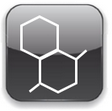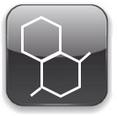Metallization treatment
Process > Aesthetic processes
| Why is plastic metallized? | |||
The fundamental purpose of a galvanic finish is to obtain a deposit whose effect persists for a period at least equal to the average life of the object on which it is applied. Currently, plastics are widely used for a large number of applications, but not all of them receive a metallization treatment. The reasons why metallic plastics are multiple. In fact, from an economic point of view, the choice of a plastic material such as ABS, compared to a piece of metal, allows to reduce the weight of the object, the energy costs related to the different stages of transformation, such as cleaning mechanics and transport. In addition, a piece of ABS has a shiny appearance after molding and, therefore, requires deposits of thickness lower than a piece in metals, for which it is necessary to limit the porosity of the surface. For technical reasons, metal coatings give polymers a decorative effect, protection against heat, against ultraviolet rays, against solvents and also provide new properties of mechanical resistance. In addition, coupling of the dielectric properties of thermoplastics and the conductivity of chemically deposited metals and / or electrolyte is used for numerous applications such as printed circuit boards or electrostatic and electromagnetic shielding. From an aesthetic point of view, the metallization of plastic also aims, in the sector of decoration and perfumery, to give a metallic appearance of final color. Finally, the metallization of plastic materials completes the use of polymers for its great freedom of shape, color, appearance and weight. These are increasingly sought after by designers and especially by automotive designers. |  | ||
| Concept | |||
The metallization by chemical means in a non-conductor consists of depositing a metal film by immersion in a solution containing a metal capable of being reduced to the surface of the material. Various techniques have been developed. The most used technique is performed in 2 phases: Initial metallization by immersion in different baths, by autocatalytic chemistry (chemical line). Reinfor Electrolytic reinforcement of the thin conductive metal film (electrolytic line). During the first phase, the surface of the material is modified to increase the porosity in the order of a few micrometers. This porosity will serve as the basis for anchoring the metallic deposits made in the second phase of the process. In fact, thanks to these porosities, it is possible to adhere a thin deposit of chemical nickel (0.2-0.5 μm), which will be the starting point to make the surface conductive. The conductive layer can then be reinforced by electrodeposition. Plastics are not conductors and not all are equivalent to the metallization process. From experience, not all plastics can be plated satisfactorily. The category of plastic that best lends itself to metallization is that of acrylonitrile butadiene styrene copolymer, commonly called "ABS" (dispersion of butadiene nodules in a matrix of styrene-acrylonitrile copolymer). |  | ||
| Adherence of a metallic deposit on polymers | |||
The surface of the plastic must be chemically modified to create on the surface of the polar or hydrophilic groups, for example, hydroxyl and carboxylic. The strangely strong bond between the polymer and the metal deposit was associated with Van der Waals forces or chemical bonds between metal and plastic. It is also based on mechanical anchoring. In this case, the rough surface of the plastic retains the metal due to an effect called "pressure pin". During the following steps, the cavities or micropores present on the surface after engraving are filled with metal. The mechanical adhesion created prevents the separation of the metal from the plastic surface. In reality, the adherence obtained is certainly a combination of these two hypotheses. These are more or less favored depending on the type of plastic and the range of preparation used. | |||
| What is adhesion? | |||
The American Society for Test Methods (ASTM) defines adhesion "the state in which two surfaces are held together by interfacial forces, which may consist of valence forces or concurrent effects, or both." It is widely believed that, although membership is a complex process, there are essentially two main forces involved: chemical bonds and mechanical interconnection. There are two types of chemical bonds that affect adhesion: ionic bonds and van der Waals forces. Ionic bonds originate from the electrostatic attraction between opposite charge ions and are the result of the exchange of electrons between the valence layers of two atoms. The Van der Waals bonds, on the other hand, are derived from the interaction between the positive and negative charges of the larger adjacent atoms or molecules. The last type of bond is more widespread in long-chain molecules, such as those that make up the underlying polymers of plastics, inks, coatings and adhesives. Although the Van der Waals individual bonds are relatively weak, the attractive forces present throughout the polymer film help to create an important and fundamental force to guarantee adhesion. |  | ||
| Mechanical interconnection | |||
In addition to Van der Waals bonds, the mechanical interconnection that occurs between the substrate surface and the ink, coating or adhesive layer provides an important contribution to adhesion. Unlike chemical bonds, this physical interconnection has a relatively intuitive mechanism: the complex topography of the substrate creates mechanical connection points that favor the adhesion of the polymer to the plastic substrate. Accordingly, any organic or inorganic material that prevents or hinders interfacial contact between the polymer surface of an ink, coating or adhesive and the surface of the substrate, ends by inhibiting adhesion. This phenomenon can be attributed to an extremely thin layer (sometimes only a few angstroms), which weakens the Van der Waals link and / or blocks physical interconnection. This thin contaminant film can be the result of inadequate or incomplete cleaning methods, rust formation after cleaning, insufficient protection of cleaned surfaces of oils, greases, fingerprints, release agents or the deposition of molecules present in the air . of the plant, generated by other upstream production or processing activities |  | ||
| Engraving phase | |||
Etching and staining solutions are acid oxidizing solutions and are composed of water, chromic acid and sulfuric acid (5- 20 min / 68 ° C), this formula is the most used today. It offers a wide range of jobs and allows the processing of a large amount of plastic materials (ABS, ABS / PC, PP, PA). To obtain a uniform wetting of the plastic material it is necessary to add an oxidation catalyst, this can be "vanadium pentoxide" or "molybdic anhydride". In any galvanic treatment, the electrolytic solution is contained in a tank, usually rectangular, made of inert polymeric material with respect to the solution, that is, PVC and PP. PP has a better resistance to heat deformation but does not resist oxidation environments (for example, chromates). |  | ||
